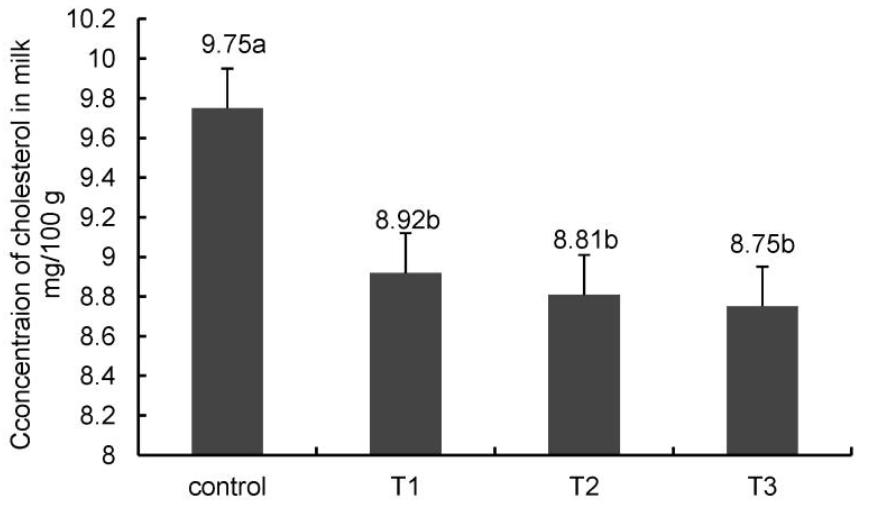Allison MJ, Bucklin JA, Dougherty RW. 1964. Ruminal changes after overfeeding with wheat and the effect of intraruminal inoculation on adaptation to a ration containing wheat. J Anim Sci 23:1164–1171.

Anbarasu C, Narayan D, Shama K, Naulia U. 2002. Blood biochemical profile and rumen fermentation pattern of goats fed leaf meal mixture or conventional cakes as dietary protein supplements. Asian-Aust. J Anim Sci 15:665–670.

AOAC. 1995. Official methods of analysis. 15th edAssociation of Official Analytical Chemists; Washington DC, USA: p. 269
Byers FM, Goodrich RD, Meiske JC. 1982. Influence of acetic acid, lactic acid and ethanol on the fermentation of com silage. J Anim Sci 54:640–648.

Burning CL, Yokoyama MT. 1988. Characteristics of live and killed brewer’s yeast slurries and intoxication by intraruminal administration to cattle. J Anim Sci 66:585–591.


Chaney EL, Marbach EP. 1962. Modified reagents for determination of urea and ammonia. Clin Chem 8:130–133.


Chen KJ, Jan DF, Chiou PWS, Yong DW. 2002. Effects of dietary heat extruded soybean meal and protected fat supplement on the production, blood and ruminal characteristics of Holstein cows. Asian-Aust. J Anim Sci 15:821–827.

Czerkawski JW, Breckenbridge G. 1972. Fermentation of various glycolytic intermediates and other compounds by rumen micro-organisms, with particular reference to methane production. Br. J Nutr 27:131–146.

Dulphy JP, Demarquilly C. 1981. Problèmes particuliers aux ensilages. Demarquilly C, editorPrevision de la valeur nutritive des aliments des ruminants. p. 81–104. Versailles: INRA Publications.
Durix A, Jean-Blain C, Sallmann HP, Jouany JP. 1991. Use of semicontinuous culture system (RUSITEC) to study the metabolism of ethanol in the rumen and its effects on ruminal digestion. Can J Anim Sci 71:115–123.

Folch J, Lee M, Sloan-Stanley GH. 1957. A sample method for the isolation and purification of total lipids from animal tissue. J Biol Chem 226:497–509.

Jean-Blain C, Durix A, Tranchant B. 1992. Kinetics of ethanol metabolism in sheep. Reprod. Nutr Dev 32:83–90.

Kristensen NB, Storm A, Raun BML, Røjen BA, Harmon DL. 2007. Metabolism of silage alcohols in lactating dairy cows. J Dairy Sci 90:1364–1377.


Lauková A, Marounek M. 1992. Physiological and biochemical characteristics of staphylococci isolated from the rumen of young calves and lambs. Zentralbl Microbiol 147:489–494.

Lepage G, Roy CC. 1986. Direct trans-esterification of all classes of lipid in a one-step reaction. J Lipid Res 27:114–221.

Lin GZ, Kim BW, Kim CH, Kim HS, Sung KI, Ohh SJ, Hong BJ, Shin JS. 2004. Changes in serum metabolites and growth characteristics of Korean native steers fed alcohol-fermented feeds. Asian-Aust. J Anim Sci 17:648–654.
Lin GZ. 2001. Nutritional metabolism of alcohol-fermented feedstuffs in the rumen of Korean beef cattle. Ph. D. Dissertation. Kangwon National University; Chunchon, Korea:
National Research Council. 2001. Nutrient requirements of dairy cattle. 7th EdNational Academy of Sciences; Washington, DC, USA:
Pearce J. 1996. Effects of milk and fermented dairy products on the blood cholesterol content and profile of mammals in relation to coronary heart disease. Int Dairy J 6:661–672.

Pradhan K, Hemken RW. 1970. Utilization of ethanol and its effect on fatty acid patterns in ruminants. J Dairy Sci 53:1739–1746.


Randby AT, Selmer-Olsen I, Baevre L. 1999. Effect of ethanol in feed on milk flavor and chemical composition. J Dairy Sci 82:420–428.


Rooke JA, Maya FM, Arnold JA, Armstrong DG. 1988. The chemical composition and nutritive value of grass silages prepared with no additive or with the application of additives containing either
lnaobacillus plantarum or formic acid. . Grass For Sci 43:87–95.

Roseler DK, Ferguson FD, Sniffen CF, Herrema I. 1993. Dietary protein degradability effects on plasma and milk urea nitrogen and milk non-protein nitrogen in Holstein cows. J Dairy Sci 76:525–534.

SAS Institute Inc.. 2004. SAS/SAT user’s guide: Version 9. 2th ednSAS Institute Inc.; Cary, North Carolina, USA:
Shin JS. 1995. Effect of fermented alcoholic feedstuff, recombinant bovine somatotropin and castration on high quality beef production. Ph. D. Dissertation. Kangwon National University; Chunchon, Korea:
Simion VE, Gheorghe P, Elena P, Luiza B, Monica P. 2010. Alteration of some biochemical and haematological parameters in the dairy cows due to the intake of mycotoxin contaminated feeds. Anim Sci Biotechnol 43:100–104.
Teunissen MJ, Kets EPW, Op den Camp HJM, Huis in’t Veld JHJ, Vogels GD. 1992. Effect of coculture of anaerobic fungi isolated from ruminants and non-ruminants with methanogenic bacteria on cellulytic and xylanolytic enzyme activities. Arch Microbiol 157:176–182.


Yan CG. 1998. Effects of alcohol-fermented feedstuff on quality meat production in Hanwoo. Ph. D. Dissertation. Kangwon National University; Chunchon, Korea:
Van Soest PJ, Robertson JB, Lewis BA. 1991. Methods for dietary fiber, neutral detergent fiber, and nonstarch polysaccharides in relation to animal nutrition. J Dairy Sci 74:3583–3597.










 PDF Links
PDF Links PubReader
PubReader ePub Link
ePub Link Full text via DOI
Full text via DOI Full text via PMC
Full text via PMC Download Citation
Download Citation Print
Print





